Montage Magic: How to Use Montage Editing to Condense Time and Convey Emotion
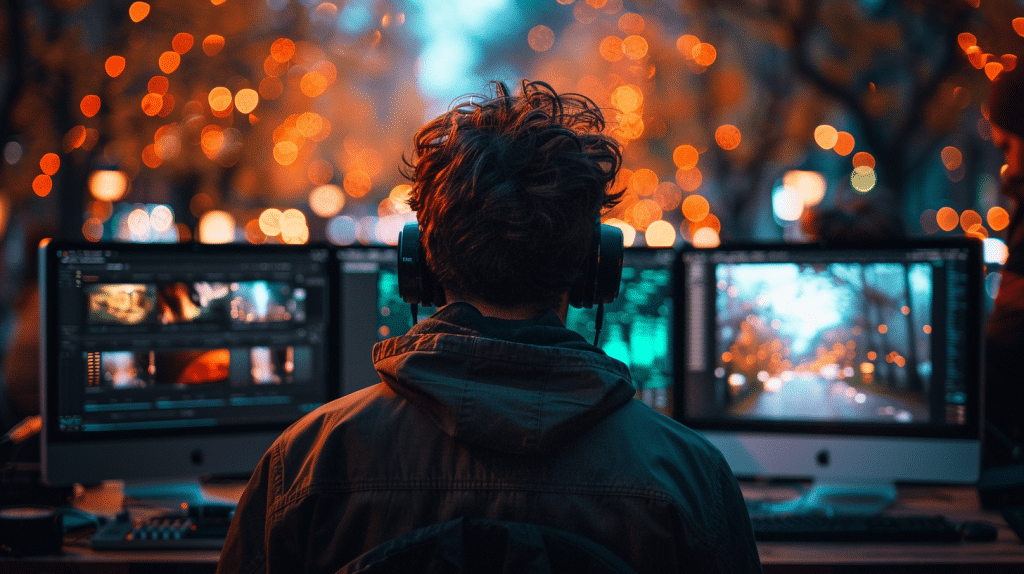
When you think about montage editing, you might recall some of the most memorable scenes in film history.
This technique allows you to compress lengthy events into short, impactful sequences, effectively conveying emotion and narrative depth.
By mastering the use of pacing, visual symbolism, and synchronized audio, you can create a powerful viewing experience that resonates with your audience.
But how exactly does one achieve this level of storytelling finesse?
Let’s explore the essential elements and techniques that make montage editing an indispensable tool in filmmaking.
Table of Contents
Understanding Montage Editing
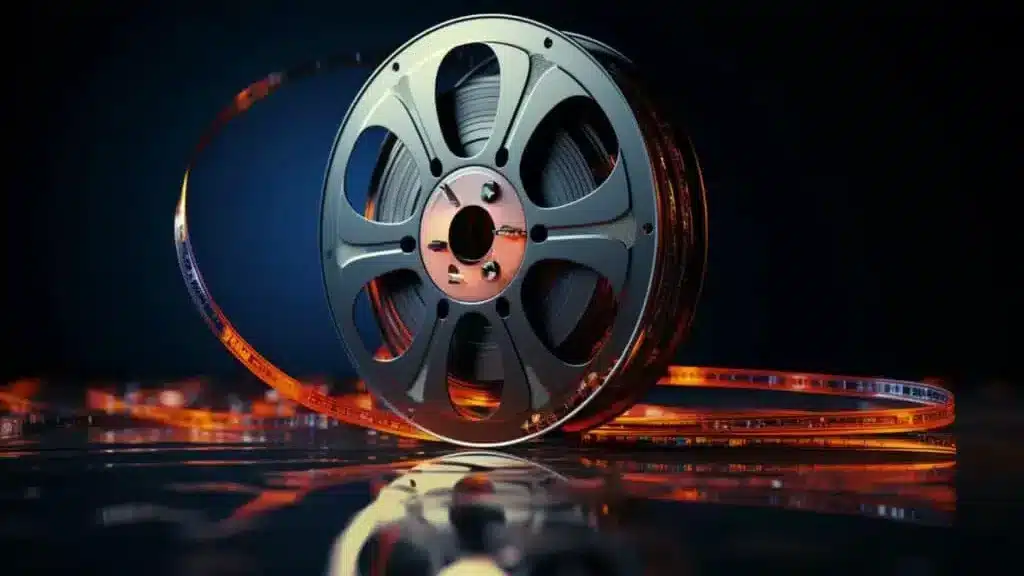
Montage editing, a technique often used to compress time and heighten emotional impact, allows filmmakers to convey complex narratives efficiently.
To master this technique, you need to understand how to weave visual symbolism into your sequences. By carefully selecting and juxtaposing images, you can create a rich tapestry of meaning that resonates with your audience, guiding them through the story without explicit exposition.
Consider pacing as the heartbeat of your montage; each cut should feel deliberate, driving the narrative forward while maintaining cohesion.
You’re not just stitching scenes together; you’re crafting a visual dialogue that speaks volumes. For instance, a montage showing a character’s training progression can use repeated motifs, like sweat dripping or clock hands spinning, to symbolize dedication and the passage of time.
Maintaining narrative cohesion is pivotal. Make sure that each shot serves a purpose and contributes to the overarching story. Disjointed or irrelevant clips can disrupt the flow and confuse your audience.
History and Evolution
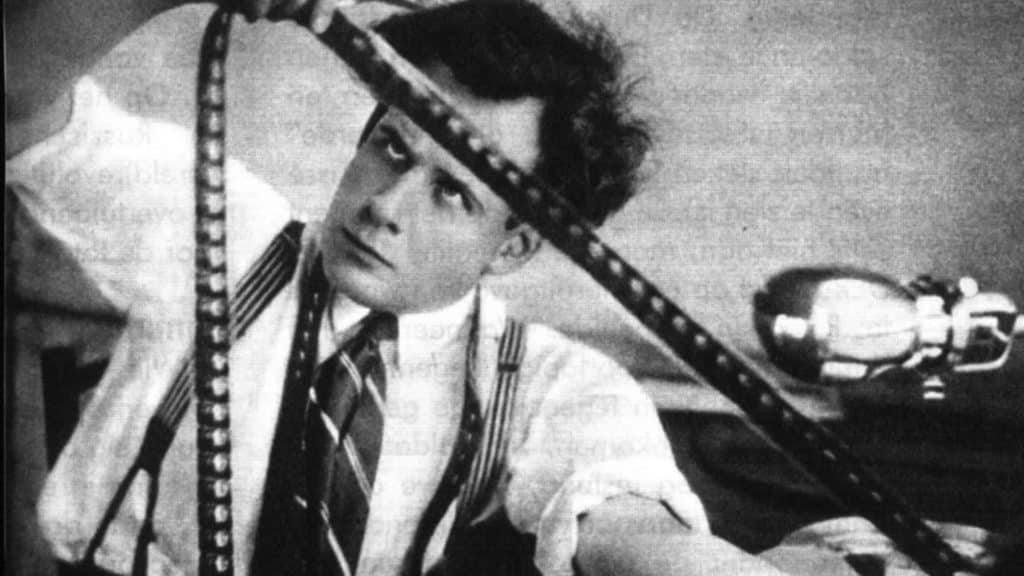
From its early roots in Soviet cinema to its modern-day applications, montage editing has continually evolved to become a cornerstone of visual storytelling.
You can trace its origins back to filmmakers like Sergei Eisenstein, who used montage in the 1920s to manipulate time and evoke powerful emotions. His theory of ‘intellectual montage‘ aimed to create meaning through the juxtaposition of unrelated images, a technique that revolutionized film editing.
As you explore further, you’ll see how the French New Wave of the 1950s and 60s further transformed montage editing.
Directors like Jean-Luc Godard and François Truffaut broke traditional editing rules, using jump cuts and non-linear sequences to convey emotional and psychological depth. Their innovative approaches to pacing and narrative structure injected a new level of dynamism and complexity into film.
Today, montage editing remains integral to visual storytelling, allowing you to condense time, build tension, and evoke emotions efficiently. By understanding its historical evolution from Soviet cinema to the French New Wave, you gain valuable insights into how montage techniques can enhance your own projects.
The rich legacy of montage editing offers a toolkit for crafting compelling narratives that resonate with audiences on multiple levels.
Types of Montage
Building on the rich history of montage editing, let’s explore the different types of montage techniques that can elevate your storytelling by manipulating time and emotion.
Narrative Montage
One of the most common is the narrative montage, which advances the story by condensing events into a brief sequence. This technique is invaluable for showing character development or significant plot points quickly, aiding narrative progression without losing important details.
Rhythmic Montage
The rhythmic montage focuses on the pacing and timing of cuts to create a specific mood or tension. Quick, successive cuts can heighten excitement or anxiety, while slower shifts can evoke calmness or introspection.
Tonal Montage
Lastly, the tonal montage considers the emotional tone of each shot. By aligning the emotional content of your scenes, you can create a cohesive and immersive experience for your audience.
Each type of montage offers unique opportunities to enhance your story, blending narrative progression with visual symbolism to create a compelling and emotionally resonant film.
Techniques for Condensing Time
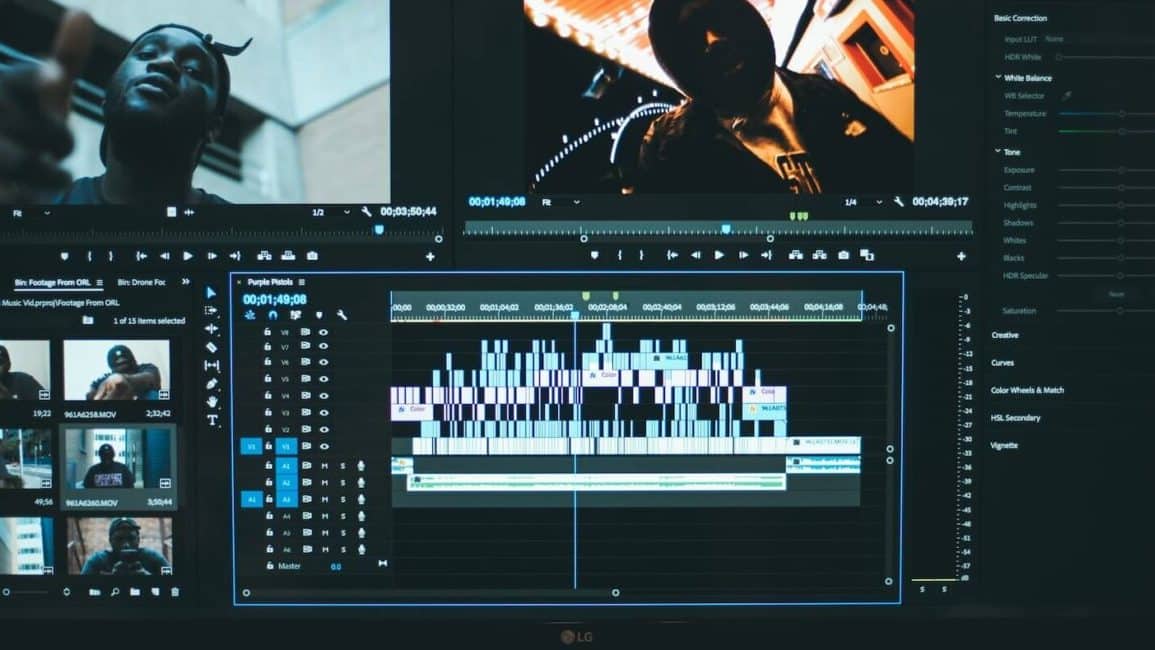
When you need to efficiently depict the passage of time in your film, employing techniques like jump cuts, time-lapses, and cross-dissolves can effectively condense lengthy sequences into engaging, succinct moments.
Start with jump cuts to quickly advance the storyline.
By removing portions of a continuous shot, you can effortlessly jump through time, maintaining narrative efficiency. This technique keeps the audience focused and guarantees the pacing remains brisk.
Time-lapses are another powerful tool.
Capture a scene over an extended period and then play it at high speed to show changes, such as the shift from day to night. This method visually communicates the passage of time without dragging the narrative.
Cross-dissolves can smoothly shift between scenes, indicating a change in time or location while maintaining narrative coherence. They’re particularly useful when you want to show the gradual progression of events.
Parallel editing allows you to intercut between two or more separate scenes happening simultaneously. This technique not only builds tension but also condenses time by showing concurrent actions that eventually converge.
Evoking Emotion Through Music
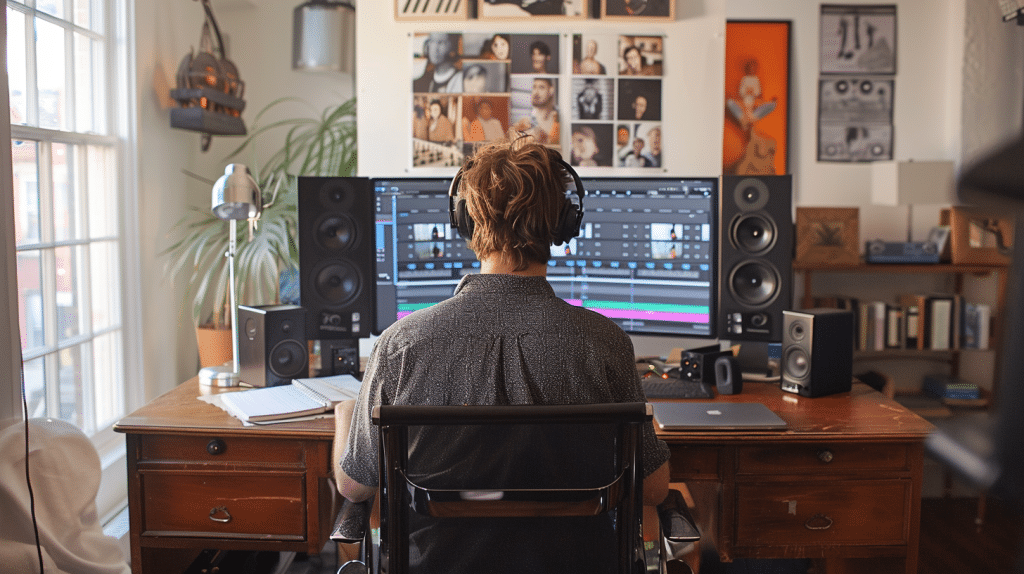
When choosing impactful soundtracks, you’ll set the emotional tone that guides your audience’s reactions.
Enhancing mood shifts with music can provide seamless changes and amplify narrative beats.
Syncing music with action guarantees that each scene’s pacing aligns perfectly with the emotional journey you’re crafting.
Choosing Impactful Soundtracks
Selecting the right soundtrack can transform a montage by heightening emotional resonance and enhancing narrative pacing. Your sound selection is vital; it can make or break the viewer’s connection to the story you’re telling.
When choosing music, consider the genre that best fits the montage’s theme and emotional tone. For instance, orchestral scores might evoke grandeur and drama, whereas indie or folk tunes could convey a more intimate or nostalgic feel.
Here are a few tips to help you choose impactful soundtracks:
- Match the Emotion: Align the music’s mood with the scene’s emotional arc. A romantic montage might benefit from soft, melodic tunes, while an action-packed sequence demands energetic, fast-paced tracks.
- Consider Pacing: The rhythm of the music should complement the montage’s pacing. Fast cuts pair well with upbeat tracks, while slower sequences might need more relaxed melodies.
- Leverage Dynamics: Use music with dynamic range to emphasize key moments. Crescendos can heighten tension, while softer passages can bring introspective calm.
- Think About Genre: Different music genres evoke different emotions. Classical music can provide elegance, while rock can add intensity and rebellion.
Enhancing Mood Shifts
To elevate your montage’s emotional impact further, skillfully shifting moods with music can guide viewers through a more nuanced and immersive experience.
When you’re crafting your montage, consider how mood changes can amplify the emotional shifts in your narrative. Using music to underscore these shifts allows you to subtly influence your audience’s emotional responses.
For instance, a sudden change from a melancholic piano piece to an uplifting orchestral score can transform a scene of despair into one of hope, creating a powerful emotional journey.
Pay attention to the pacing of your montage. Seamless mood adjustments are essential.
A poorly timed change can jolt viewers out of the experience, while a well-executed one can enhance the narrative flow. Think about the emotional arc you want to convey and select musical pieces that mirror these shifts.
Layering music to gradually alter the mood can also be effective, allowing for a smoother emotional transformation.
Syncing Music With Action
Syncing music with action in your montage can heighten the emotional resonance and guarantee your audience is fully engaged with the unfolding narrative. Audio synchronization isn’t just a technical task; it’s an art that demands careful attention to detail.
When you match the rhythm of your music to the pacing of your visuals, you create a cohesive experience that amplifies the intended emotions.
Consider these key aspects to make your montages more effective:
- Beat Matching: Align key visual moments with the beats or crescendos in your music. This creates a compelling synergy that draws viewers in.
- Emotional Tone: Choose music that mirrors the emotion you aim to evoke. A fast-paced track can convey excitement, while a slower melody can enhance moments of introspection.
- Smooth Transitions: Use musical shifts to smoothly guide viewers from one scene to the next, maintaining the flow and emotional arc.
- Dynamic Changes: Sync dynamic shifts in music with significant visual changes to heighten impact and maintain viewer engagement.
Mastering audio synchronization and rhythm matching enriches your montage, turning it from a simple sequence of clips into a powerful storytelling tool.
By integrating these techniques, you make sure each element of your montage works in harmony, creating an unforgettable viewing experience.
Storyboarding Your Montage
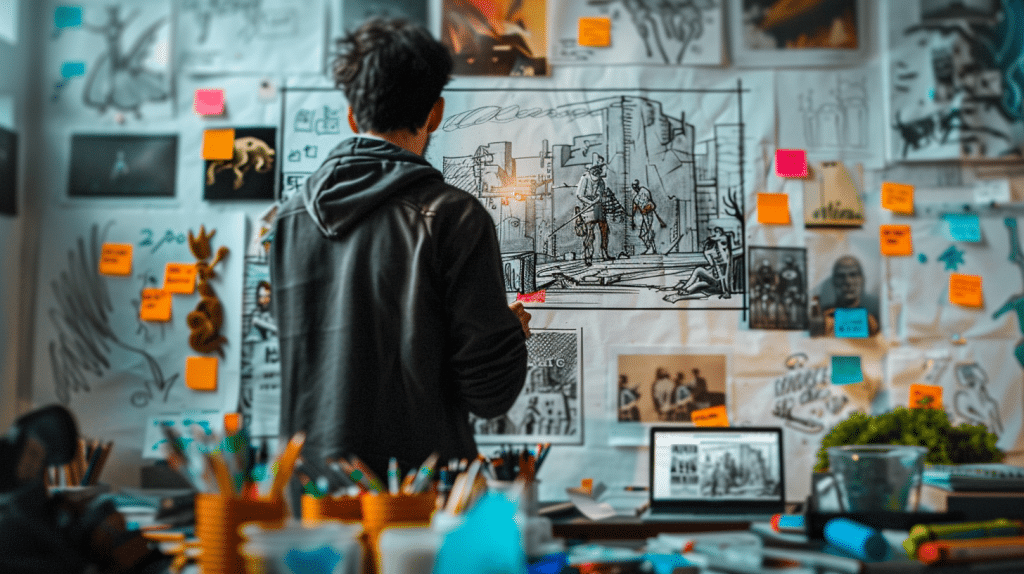
How can you effectively translate your vision into a coherent sequence of images?
Begin with meticulous shot selection to guarantee each frame serves your narrative purpose.
Think about what each shot communicates and how it contributes to the overall story you’re telling. Select shots that not only capture the essence of the scene but also maintain visual continuity, important for a seamless viewer experience.
Next, sketch out your storyboard with a focus on the pacing of your montage. Determine the rhythm by plotting where each shot will appear and how long it will last.
This helps in crafting a dynamic flow that keeps the audience engaged. Pay attention to connections between shots, ensuring they enhance rather than disrupt the story’s momentum.
Incorporate visual storytelling techniques by varying shot sizes and angles.
Close-ups can convey intense emotion, while wide shots provide context. Use medium shots to bridge the two, maintaining a balanced visual narrative.
Tools and Software
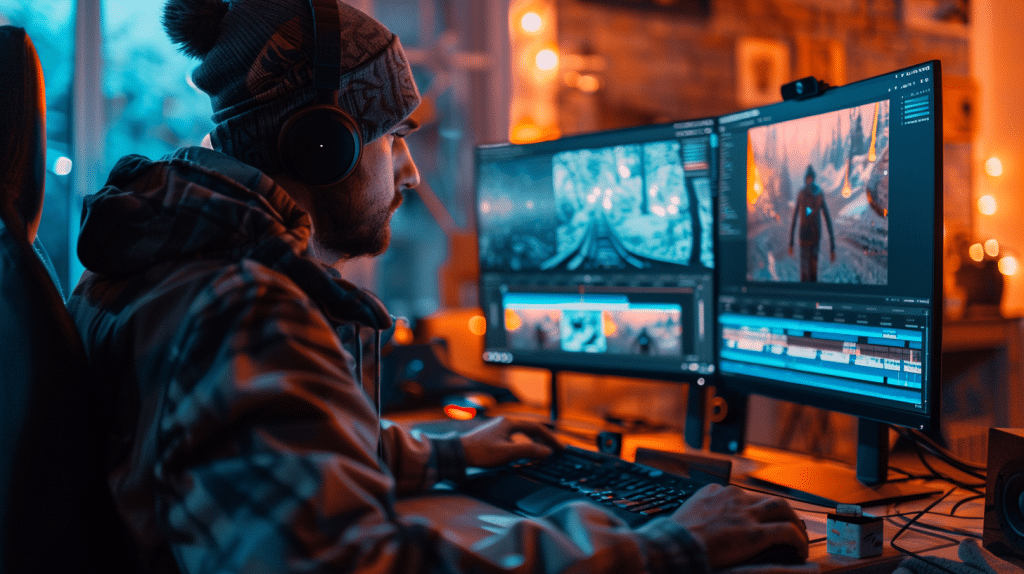
Once your storyboard is set, you’ll need the right tools and software to bring your montage to life with precision and creativity.
The choice of video editing and animation software can have a profound impact on the pacing and emotional resonance of your montage.
For video editing, industry-standard programs provide robust features that guarantee smooth progressions, precise cuts, and enhanced visual storytelling. Consider these options:
- Adobe Premiere Pro: Known for its versatility and professional-grade tools, it’s perfect for detailed editing and layering effects.
- Final Cut Pro: A favorite among Mac users, it offers intuitive controls and powerful rendering capabilities.
- DaVinci Resolve: Ideal for color grading and post-production, this software excels in crafting visually stunning montages.
- Blender: While primarily an animation software, Blender’s video editing capabilities are excellent for integrating animated sequences into your montage.
Each of these tools allows you to manipulate time and rhythm, essential for maintaining the pacing that keeps viewers engaged.
Animation software like Blender can add dynamic elements, making your montage more engrossing. Selecting the right software ensures that your creative vision is executed flawlessly, enabling you to condense time effectively and convey the intended emotion through expertly crafted sequences.
Analyzing Famous Montages
To understand the power of montage, you’ll examine iconic film sequences that masterfully blend emotional storytelling with time compression. Analyzing these examples will reveal how pacing and visual techniques create impactful narratives.
Iconic Film Montages
Masterful film montages, like the exhilarating training sequences in ‘Rocky’ or the poignant passage of time in ‘Up,’ expertly manipulate pacing and visual storytelling to evoke powerful emotions and condense complex narratives.
These iconic scenes showcase the true power of montage editing, blending visuals and music to create impactful moments that resonate with audiences.
In ‘Rocky,’ the training montage is a perfect example of how you can use pacing to build excitement and anticipation.
The quick cuts between Rocky’s intense workouts, combined with the triumphant score, create a sense of progression and determination. This technique not only condenses time but also deepens the viewer’s emotional connection to the character.
Similarly, ‘Up’ employs a flashback sequence to convey a lifetime of memories in just a few minutes.
The montage seamlessly progresses through different stages of Carl and Ellie’s life, using visual cues and music to evoke a spectrum of emotions.
Here are key elements that make these montages effective:
- Pacing: Rapid cuts to build momentum or gradual shifts to evoke nostalgia.
- Visual storytelling: Using imagery to convey complex narratives quickly.
- Music: Enhancing emotional impact.
- Symbolism: Objects or actions representing larger themes.
Emotional Storytelling Techniques
Analyzing famous montages reveals how filmmakers employ emotional storytelling techniques to condense time and amplify narrative impact.
In ‘Rocky,’ the training montage is a masterclass in character development.
Through a series of visual metaphors—like running up the steps of the Philadelphia Museum of Art—you’re shown Rocky’s transformation from underdog to contender. Each cut is meticulously timed to the rhythm of the music, accelerating the pacing and heightening emotional engagement.
In ‘Up,’ the opening montage tells Carl and Ellie’s life story in just a few minutes.
This sequence condenses decades into a poignant narrative, using visual metaphors like the ever-changing Adventure Book.
You witness their dreams, joys, and sorrows, all without a single word of dialogue. The pacing is calibrated to evoke an emotional crescendo, making you deeply invest in the characters’ journey.
Another powerful example is ‘The Godfather.’
The baptism montage juxtaposes Michael Corleone’s rise to power with the sacrament of baptism, creating a stark contrast between innocence and corruption.
Visual metaphors, such as the church’s holy water and the violent acts being committed, enrich the narrative layers. This montage sharpens character development by exposing Michael’s duality, all while maintaining a compelling pace.
Time Compression Examples
Frequently in cinema, montages serve as potent tools for compressing time, seamlessly advancing the narrative while maintaining audience engagement.
Think of how ‘Rocky’ uses sports highlights to show Rocky Balboa’s intense training.
Each punch, each run up the stairs, and every bead of sweat condenses weeks of preparation into a few exhilarating minutes. This montage not only speeds up time but also builds emotional intensity and anticipation for the upcoming fight.
This montage not only speeds up time but also builds emotional intensity and anticipation for the upcoming fight.
Now, let’s consider another example: the opening sequence of ‘Up.’
This montage chronicles Carl and Ellie’s entire married life through daily routines and significant life events. In just a few minutes, it conveys decades of love, loss, and dreams, all without a single word of dialogue.
To effectively use montages in your own work, keep these elements in mind:
- Rhythm and pacing: Ensure cuts are timed to the beat of the accompanying music.
- Visual variety: Use different camera angles and movements to keep the sequence dynamic.
- Thematic consistency: Maintain a visual and emotional thread throughout the montage.
- Economy of storytelling: Each shot should serve a purpose, advancing the narrative or developing character.
Frequently Asked Questions
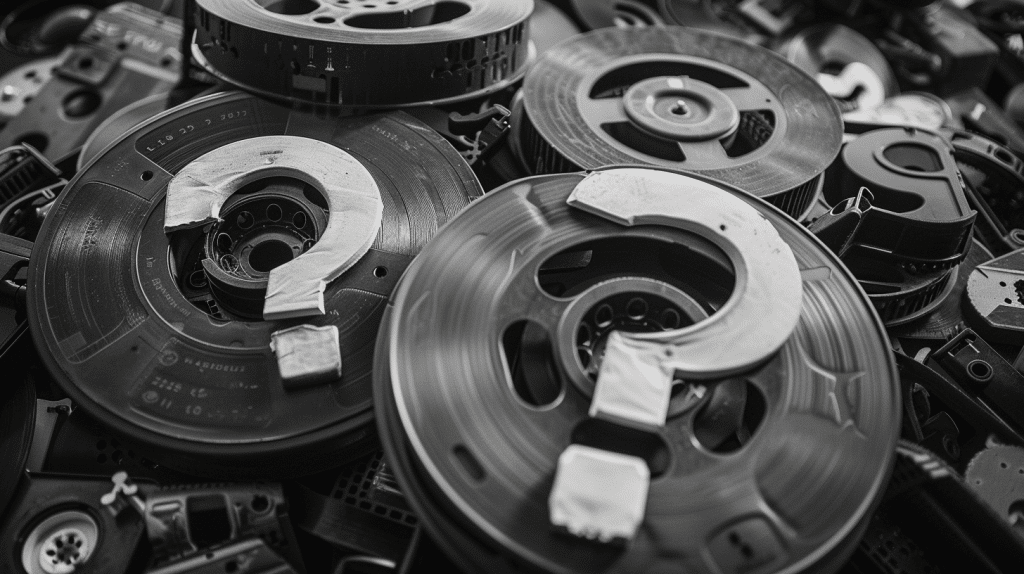
How Can Montage Be Used in Commercials to Enhance Brand Messaging?
You can use montage in commercials to enhance brand messaging by creating narrative cohesion and employing symbolic imagery. Rapid, well-paced sequences allow you to tell a compelling story quickly, connecting viewers emotionally.
Visual storytelling techniques help you convey complex ideas succinctly, while pacing knowledge guarantees the montage flows smoothly, maintaining audience engagement. This approach reinforces brand identity and leaves a lasting impression.
What Are the Common Mistakes to Avoid in Montage Editing?
When editing a montage, strive to avoid inconsistent cutting, which disrupts the viewer’s experience. Make sure your cuts maintain a rhythm that matches the scene’s pacing.
Another common mistake is neglecting emotional resonance. Each clip should build on the previous one to enhance the emotional journey.
Maintain cutting consistency and a keen focus on visual storytelling to keep your audience engaged and emotionally connected throughout the montage.
How Do You Choose the Right Pacing for a Montage Sequence?
Choosing the right pacing for a montage sequence requires balancing pacing techniques with scene shifts.
Juxtapose rapid cuts against slower moments to create a rhythm that matches the story’s emotional beats.
Use visual storytelling to guide your decisions—let the narrative dictate if you need quick, energetic cuts or slow, contemplative ones.
Always keep your pacing knowledge sharp, ensuring the shifts feel seamless and enhance the viewer’s engagement.
Can Montage Editing Be Effectively Applied in Animated Films?
Absolutely, montage editing can be effectively applied in animated films. You’ll find it’s a powerful tool for character development and visual storytelling.
By carefully selecting and pacing scenes, you can show a character’s growth or convey complex emotions succinctly. Animation allows for creative shifts and visual metaphors that enhance the montage’s impact.
Mastering this technique can elevate your storytelling and engage your audience deeply.
What Role Does Color Grading Play in Enhancing a Montage’s Emotional Impact?
Color grading plays a pivotal role in enhancing a montage’s emotional impact. Imagine it as the Flux Capacitor of your visual storytelling; it uses color symbolism to set the tone.
Putting It All Together
Mastering montage editing is like wielding a conductor’s baton; you orchestrate visuals, pacing, and sound to craft an unforgettable symphony.
By understanding its history, types, and techniques, you can condense time and evoke powerful emotions.
Use storyboarding and the right tools to fine-tune your sequences.
Analyzing famous montages will elevate your skills, allowing you to create narratives that linger long after the credits roll.
Embrace montage magic and transform your storytelling.
Share:
Search our blog:
Follow us on:
